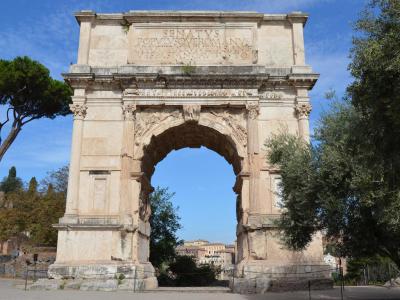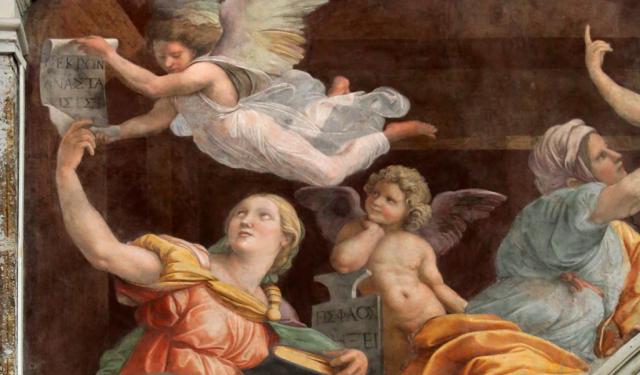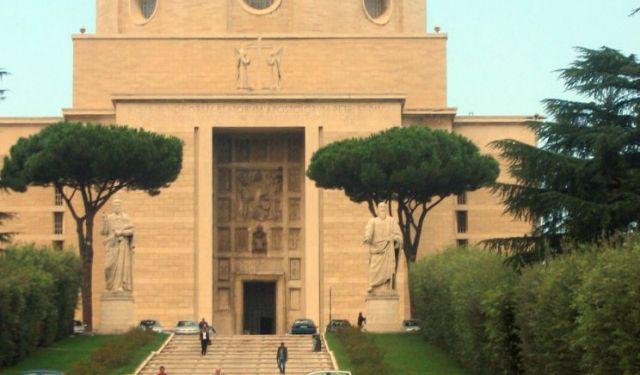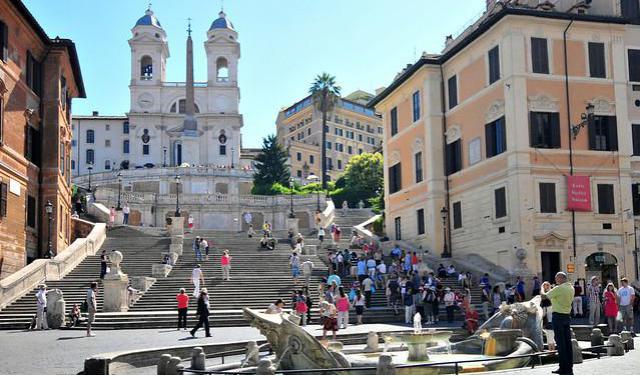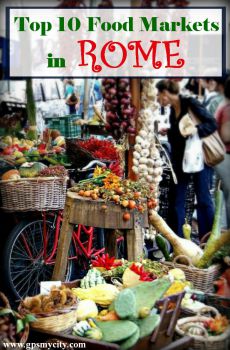Arco di Tito (Arch of Titus), Rome
The Arch of Titus, an honorific arch on the Sacred Street, was built by Emperor Domitian around 81 AD. Its purpose was to commemorate Domitian's brother Titus’ victory in Judaea (which is modern-day Israel and Palestine) and his subsequent deification. The arch celebrates the Roman triumph over the Jewish revolt (also known as the Great Revolt), which resulted in the fall of Jerusalem in 70 AD. This victory brought over 60,000 Jewish slaves and immense wealth back to Rome, funding the construction of the Colosseum.
One of the only three surviving arches out of Rome’s original 36, the Arch of Titus provides a rare visual representation of the Roman triumphal procession of 71 AD. It also portrays Titus on horseback, symbolizing Rome’s dominance, and the Eagle, a representation of Roman power.
The Roman treatment of conquered people varied. Those who surrendered quickly were often incorporated into Roman society, while those who resisted fiercely-as in Judaea-faced brutal consequences such as mass slaughter, enslavement, and destruction of homes and livelihoods. The Jewish rebellion was crushed after the Romans breached three walls of Jerusalem over seven months, leading to one of the most devastating sackings of antiquity.
The arch's panels vividly depict scenes from this momentous event, offering one of the few contemporary representations of artifacts from Herod's Temple including the menorah, a multi-branched candelabra, used in the religious rituals of Judaism. While not explicitly mentioned, the panels closely mirror the narrative of the Roman procession described a decade earlier in the book titled "The Jewish War" written by Josephus, a first-century Roman-Jewish historian.
Beyond its historical importance, the Arch of Titus showcases a significant evolution in Roman art. The reliefs inside demonstrate early illusionistic techniques, giving a sense of depth and motion, a precursor to Baroque aesthetics nearly 1,500 years later. These artistic innovations highlight the stark contrast between the flourishing Roman Empire and the struggling tribes of northern Europe, who at the time still lived in primitive conditions.
As such, the arch had a long-lasting architectural influence, serving as a model for later triumphal arches, including the Arch of Triumph in Paris. Although the identity of its architect is uncertain, Rabirius, a favored designer of Emperor Domitian, is often suggested.
For Jewish communities, the arch remains a symbol of the diaspora. The menorah relief, a significant Jewish artifact depicted on the arch, later inspired the official emblem of the State of Israel. Today, the Arch of Titus is a must-see monument in Rome, linking the ancient past to modern history and symbolizing both Roman power and Jewish resilience.
One of the only three surviving arches out of Rome’s original 36, the Arch of Titus provides a rare visual representation of the Roman triumphal procession of 71 AD. It also portrays Titus on horseback, symbolizing Rome’s dominance, and the Eagle, a representation of Roman power.
The Roman treatment of conquered people varied. Those who surrendered quickly were often incorporated into Roman society, while those who resisted fiercely-as in Judaea-faced brutal consequences such as mass slaughter, enslavement, and destruction of homes and livelihoods. The Jewish rebellion was crushed after the Romans breached three walls of Jerusalem over seven months, leading to one of the most devastating sackings of antiquity.
The arch's panels vividly depict scenes from this momentous event, offering one of the few contemporary representations of artifacts from Herod's Temple including the menorah, a multi-branched candelabra, used in the religious rituals of Judaism. While not explicitly mentioned, the panels closely mirror the narrative of the Roman procession described a decade earlier in the book titled "The Jewish War" written by Josephus, a first-century Roman-Jewish historian.
Beyond its historical importance, the Arch of Titus showcases a significant evolution in Roman art. The reliefs inside demonstrate early illusionistic techniques, giving a sense of depth and motion, a precursor to Baroque aesthetics nearly 1,500 years later. These artistic innovations highlight the stark contrast between the flourishing Roman Empire and the struggling tribes of northern Europe, who at the time still lived in primitive conditions.
As such, the arch had a long-lasting architectural influence, serving as a model for later triumphal arches, including the Arch of Triumph in Paris. Although the identity of its architect is uncertain, Rabirius, a favored designer of Emperor Domitian, is often suggested.
For Jewish communities, the arch remains a symbol of the diaspora. The menorah relief, a significant Jewish artifact depicted on the arch, later inspired the official emblem of the State of Israel. Today, the Arch of Titus is a must-see monument in Rome, linking the ancient past to modern history and symbolizing both Roman power and Jewish resilience.
Want to visit this sight? Check out these Self-Guided Walking Tours in Rome. Alternatively, you can download the mobile app "GPSmyCity: Walks in 1K+ Cities" from Apple App Store or Google Play Store. The app turns your mobile device to a personal tour guide and it works offline, so no data plan is needed when traveling abroad.
Arco di Tito (Arch of Titus) on Map
Sight Name: Arco di Tito (Arch of Titus)
Sight Location: Rome, Italy (See walking tours in Rome)
Sight Type: Attraction/Landmark
Guide(s) Containing This Sight:
Sight Location: Rome, Italy (See walking tours in Rome)
Sight Type: Attraction/Landmark
Guide(s) Containing This Sight:
Walking Tours in Rome, Italy
Create Your Own Walk in Rome
Creating your own self-guided walk in Rome is easy and fun. Choose the city attractions that you want to see and a walk route map will be created just for you. You can even set your hotel as the start point of the walk.
Palatine Hill Walking Tour
Palatine Hill — one of Rome’s legendary Seven Hills — is the most ancient part of the city. According to mythology (and a fair bit of archaeology backing it up), this is where the whole Roman saga began to unfold in the year 753 BC when young Romulus pointed dramatically at the hill and probably thought to himself: “Yes, this is the spot.” And just like that, a city that would eventually... view more
Tour Duration: 2 Hour(s)
Travel Distance: 2.6 Km or 1.6 Miles
Tour Duration: 2 Hour(s)
Travel Distance: 2.6 Km or 1.6 Miles
"Roman Holiday" Movie Walking Tour
Filmed entirely in the heart of Rome, Roman Holiday is one of those timeless films that beckons you to hop on a Vespa and lose yourself in the intoxicating beauty of the Italian capital. Released in 1953, this beloved classic has captured hearts across generations, thanks to its irresistible blend of romance, adventure, and charm-anchored by two of Hollywood’s brightest stars, Audrey Hepburn and... view more
Tour Duration: 4 Hour(s)
Travel Distance: 8.5 Km or 5.3 Miles
Tour Duration: 4 Hour(s)
Travel Distance: 8.5 Km or 5.3 Miles
Hidden Art Treasures in Rome
Rome is one of the world's top living museums, replete with some of the most iconic pieces of art on the face of the planet. Famous artists, such as Michelangelo, Caravaggio, Raphael, Bernini, to mention but a few, had lived and worked here and left indelible marks in the city.
Needless to say that the abundance of masterpieces makes Rome crowded with tourists anxious to see them, causing... view more
Tour Duration: 1 Hour(s)
Travel Distance: 2.6 Km or 1.6 Miles
Needless to say that the abundance of masterpieces makes Rome crowded with tourists anxious to see them, causing... view more
Tour Duration: 1 Hour(s)
Travel Distance: 2.6 Km or 1.6 Miles
EUR Sightseeing Walking Tour
The Esposizione Universale di Roma (EUR), located in the southern suburb of Rome, was originally constructed for an international exhibition that was planned by Mussolini as a grand celebration of Fascist Italy. However, due to the outbreak of World War II, the exhibition never took place. The architecture of EUR was designed to glorify Fascism and showcases a distinct style that sets it apart... view more
Tour Duration: 2 Hour(s)
Travel Distance: 3.6 Km or 2.2 Miles
Tour Duration: 2 Hour(s)
Travel Distance: 3.6 Km or 2.2 Miles
Spanish Steps to Trevi Fountain
An established tourist mecca, today's Rome is hardly imaginable without two of its much loved attractions – the Spanish Steps and the Trevi Fountain. Magnets for tourists as they are, these two sights are connected to a number of other, not less worthy of attention locations, such as the Fountain of the Longboat or Piazza Colonna and its centerpiece, the Column of Marcus Aurelius, to... view more
Tour Duration: 1 Hour(s)
Travel Distance: 2.0 Km or 1.2 Miles
Tour Duration: 1 Hour(s)
Travel Distance: 2.0 Km or 1.2 Miles
Food Tasting Walking Tour
Whether it’s a long lunch or a stop-off for an ice cream on an evening stroll, eating in Rome is a very social activity. Culinary traditions run deep here, and it may well be one of Italy’s most pleasurable cities in which to eat. Deli shops, prosciutterias, pizzerias, fornos (bakeries) and caffès are also very popular and offer a great alternative to a restaurant meal.
On this... view more
Tour Duration: 2 Hour(s)
Travel Distance: 2.7 Km or 1.7 Miles
On this... view more
Tour Duration: 2 Hour(s)
Travel Distance: 2.7 Km or 1.7 Miles
Useful Travel Guides for Planning Your Trip
Souvenirs Shopping: 15 Authentic Italian Things To Buy in Rome
Rome is the Eternal City and, as such, the list of gift options available here is countless. Whether it's something edible, drinkable, wearable or pleasing to the eye that you want - you will find it all here in abundance. However, if time or budget is the factor, perhaps you might want to...
17 Best Gelaterias in Rome Italy
For ice cream lovers and dabblers this guide is a treasure chest of Rome’s best gelato shops. There are gelaterias everywhere. Many visitors to Rome only have a few days to explore the city. You owe it to yourself to make the most of your time and find the gelato locals eat. Often the authentic...
10 Best Food Markets in Rome Italy
Of all the things Italy is most famous for (cars, music, fashion, movies, etc.), food is, undoubtedly, top of the list. Rome may well not be the whole Italy, but no Italy is whole without Rome... And the Romans, much as all their fellow-Italians, like it "fresco", hence the abundance of...
